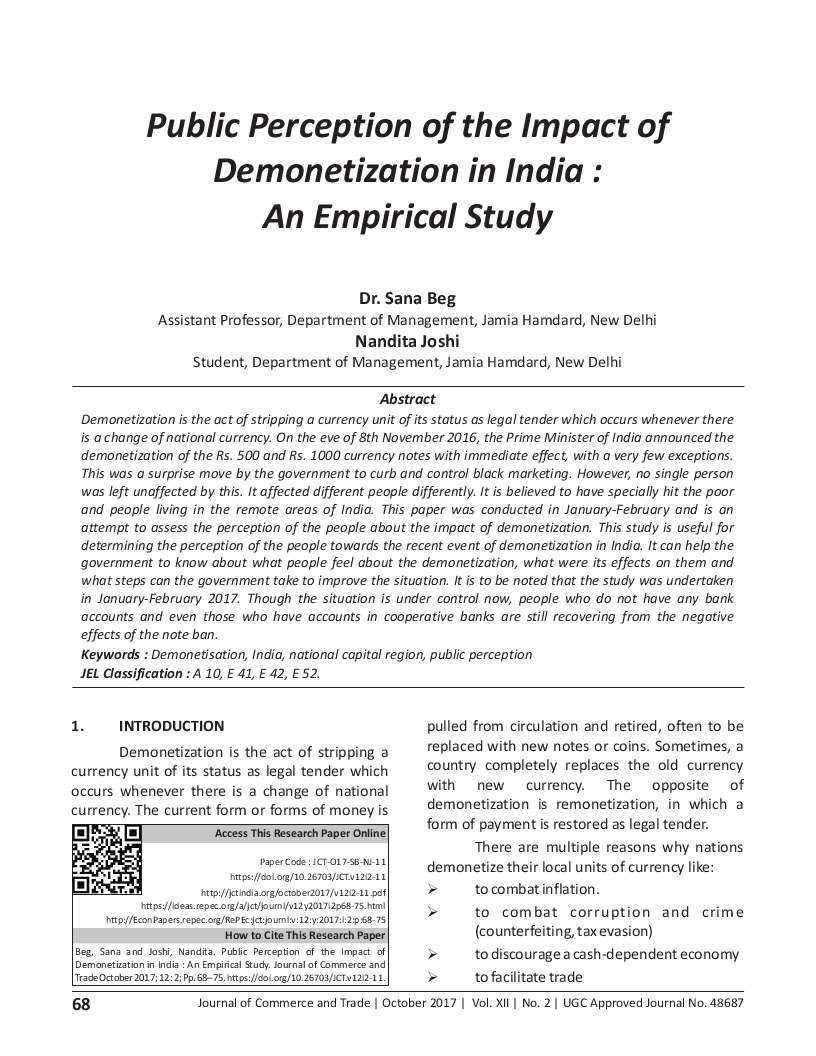Public Perception of the Impact of Demonetization in India: An Empirical Study
DOI:
https://doi.org/10.26703/jct.v12i2.161Keywords:
Demonetization, India, ATMs, Bank Deposits, Bank AccountsAbstract
Demonetization is the act of stripping a currency unit of its status as legal tender which occurs whenever there is a change of national currency. On the eve of 8th November 2016, the Prime Minister of India announced the demonetization of the Rs. 500 and Rs. 1000 currency notes with immediate effect, with a very few exceptions. This was a surprise move by the government to curb and control black marketing. However, no single person was left unaffected by this. It affected different people differently. It is believed to have specially hit the poor and people living in the remote areas of India. This paper was conducted in January-February and is an attempt to assess the perception of the people about the impact of demonetization. This study is useful for determining the perception of the people towards the recent event of demonetization in India. It can help the government to know about what people feel about the demonetization, what were its effects on them and what steps can the government take to improve the situation. It is to be noted that the study was undertaken in January-February 2017. Though the situation is under control now, people who do not have any bank accounts and even those who have accounts in cooperative banks are still recovering from the negative effects of the note ban.
JEL Classification : A 10, E 41, E 42, E 52.
Downloads
References

Downloads
Published
Issue
Section
License
Copyright (c) 2017 Dr. Sana Beg, Nandita Joshi

This work is licensed under a Creative Commons Attribution 4.0 International License.










